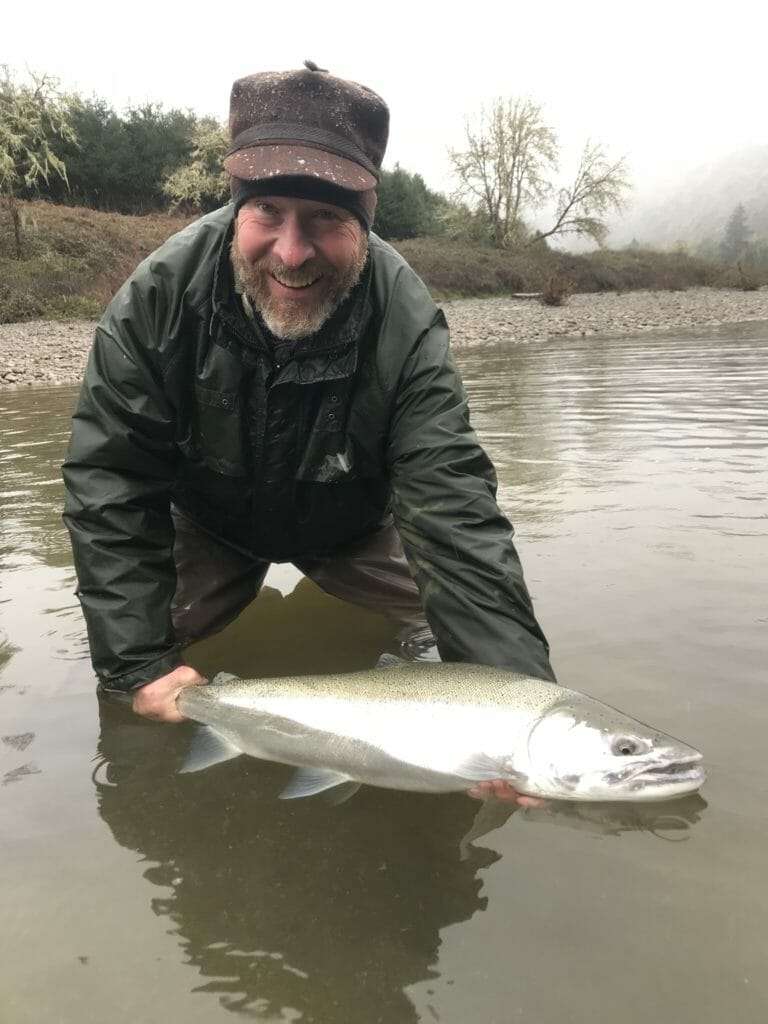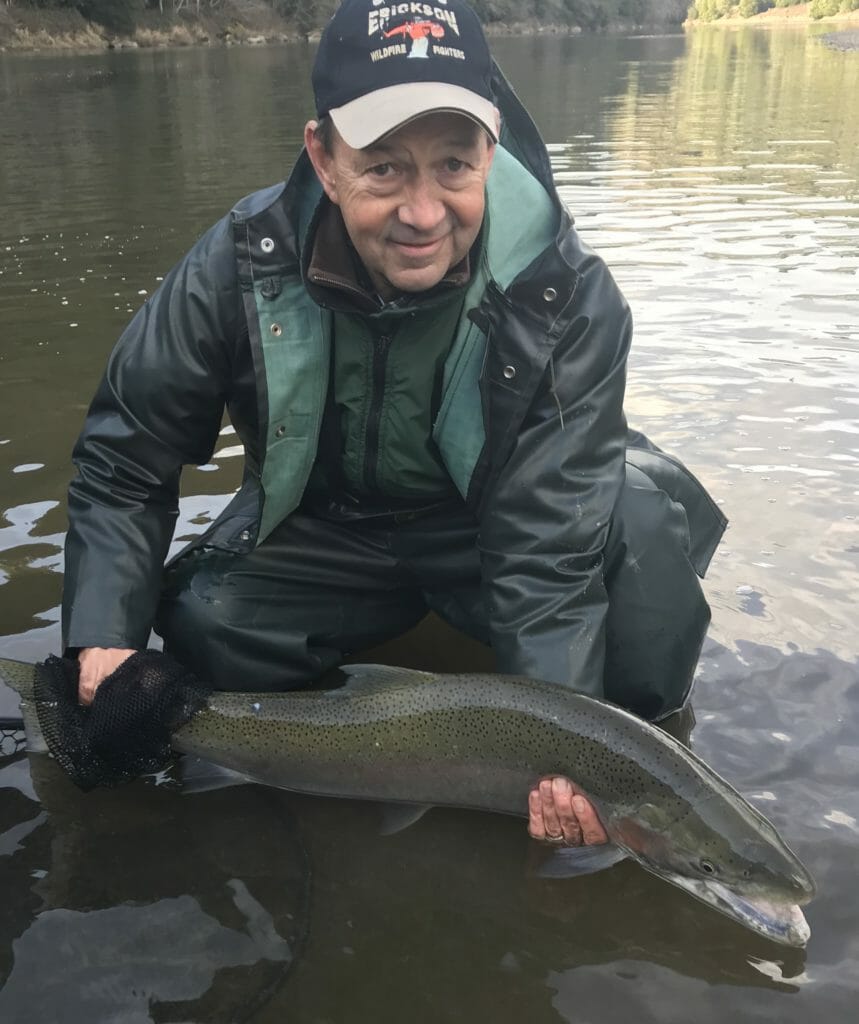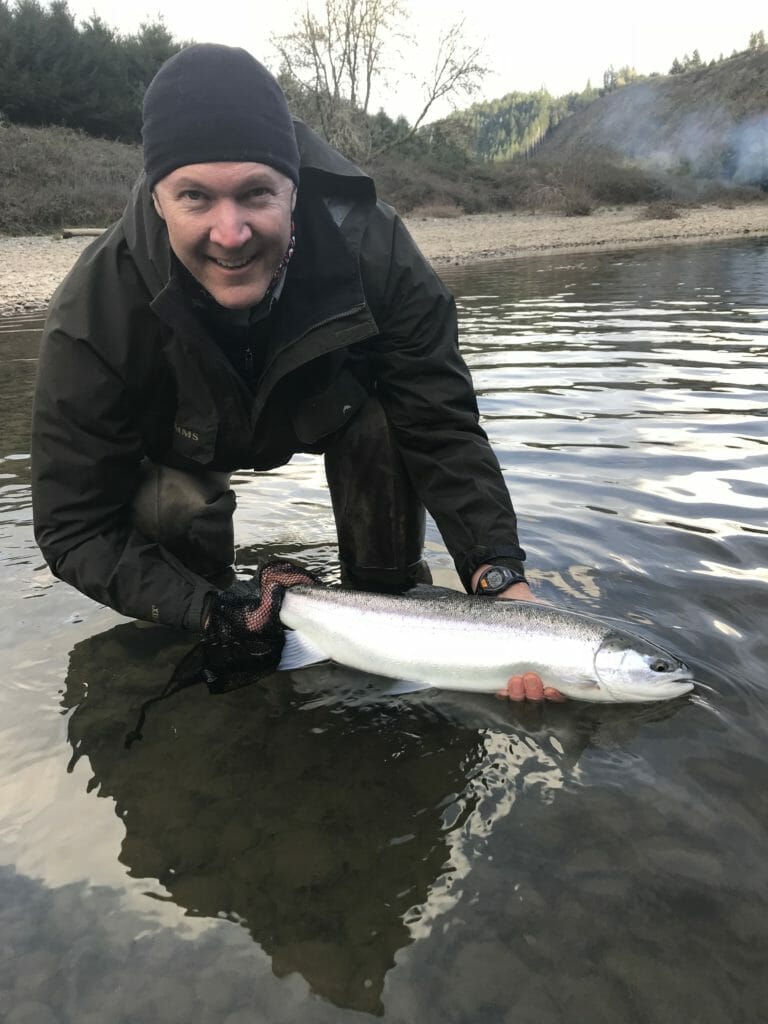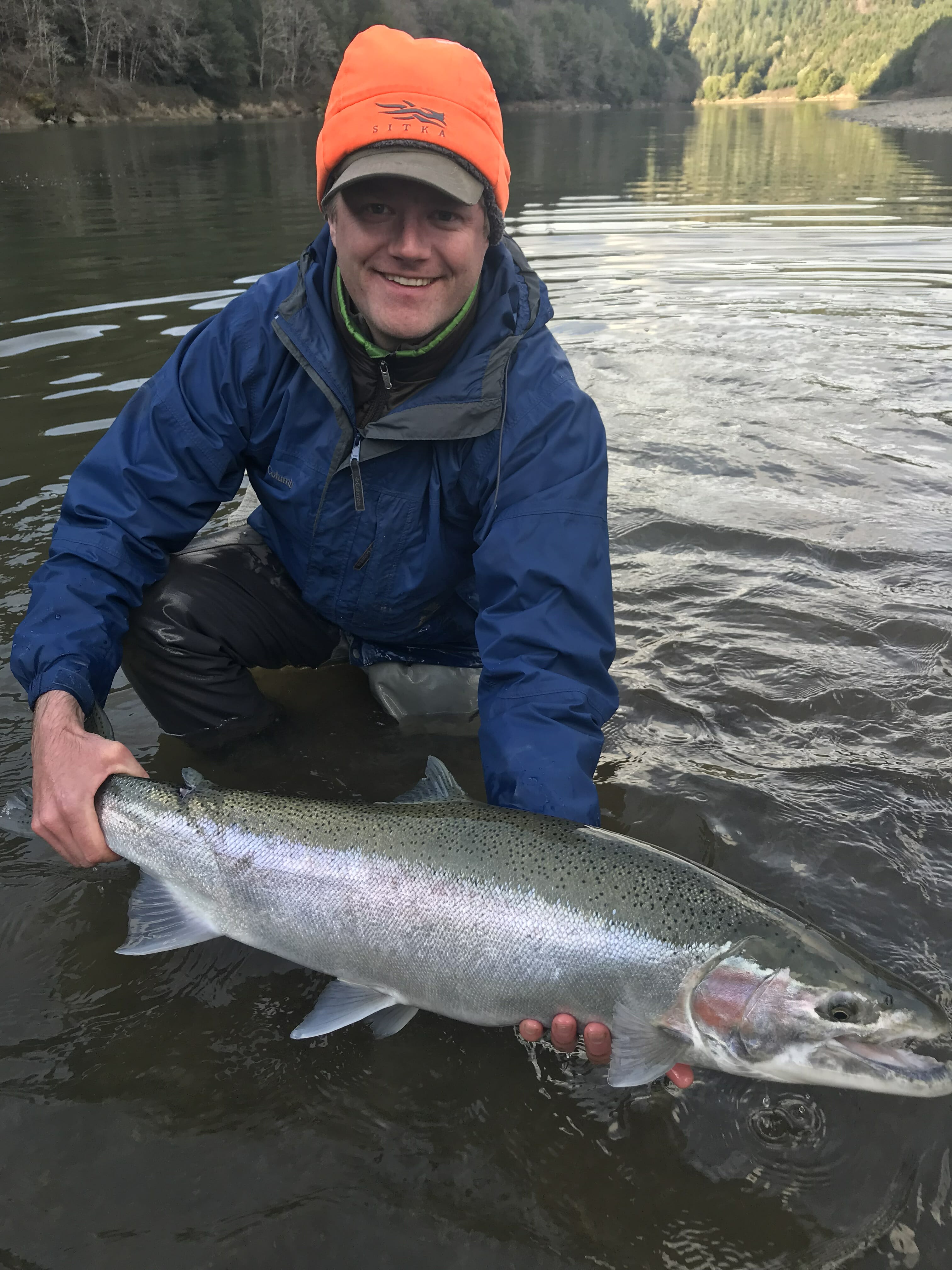TU’s Corey Fisher with a beast from one of Oregon’s fabled steelhead waters, the Umpqua.
His casting rod sat in its holder mounted to the side of the boat. At the end of 35 feet of 12-pound monofilament, his metallic pink Mag-Lip plug wiggled back and forth near the bottom of Oregon’s Umpqua river.
And when the rod slammed down violently and line started screaming off his reel, my friend and colleague from Montana, Tom Reed, didn’t give one hoot that his first wild steelhead was not caught on a fly rod.
Trout Unlimited folks love to fish. Many of us often use a fly rod, but that’s mainly because trout eat mostly insects and there is no better way to present a “fly” than with a fly rod. And about half of all TU members also fish with other tackle.

But fishing with a fly rod, which requires a lot of river awareness, fish know-how and tactical skill to be done successfully, is really more than just presenting a fly to fish. Once we’ve tried it, many of us favor “flinging fur and fluff.”
However, over my many years of guiding for Oregon steelhead and salmon, I’ve learned a few things about fish and anglers. Wild winter steelhead, for example, are just flat-out tough. Not only in a physical sense—they’re also darn challenging to catch. Many of my clients who have experience chasing permit, giant trevally and tarpon on a fly rod all say that winter steelhead are the most challenging of all game fishes on that kind of tackle.
So when I was tasked with organizing a TU staff retreat on my home river, the Umpqua, I knew that at least some of our “teambuilding” would include a little time on the water—and at least some of that time we would use conventional tackle.
That’s because everyone I fish with wants to catch a steelhead, but no one wants them to catch a steelhead more than I do. My colleagues were coming from Montana, Idaho, Colorado and Arizona and I was determined that the wild winter steelhead in my backyard water should have every opportunity to show my guests some down-home, Oregon style hospitality.
At these kinds of intensive, out-of-office staff meetings, we always have a full agenda to drill down on work related issues. But late in the afternoon, after our work wound down, we donned our waders, fleece and wool and headed down to the water.

Western Oregon was unusually cold at that time, with snow falling each night and daytime temperatures never getting above the mid-30s. But the Umpqua was running that classic “steelhead green” color that keeps experienced steelheaders awake at night with anticipation.
We all started out swinging flies on spey rods, methodically working down some of the Umpqua’s best swing water. The steelhead were their usual “Not gonna play that game” selves. Only one wild steelhead, caught by Greg McReynolds, the Intermountain Region director for TU’s Sportsmen Conservation Project, came to the fly.
My colleagues really just wanted to be together on a beautiful river, sharing a great experience. Catching any steelhead at all would be icing on the cake. But I thought the fish should be a little more friendly to my out-of-state crew.
Time to change tactics.
I knew that getting into the boats and fishing off an anchor with conventional rods rigged with steelhead plugs would greatly increase our odds. It didn’t take long to connect.
We fought the fish we hooked from the boat in deeper water, then, when they were ready to be landed, we moved the boats to the shallows where we could get out and carefully land the, without removing them from the water and quickly record the event with a photo before letting the fish continue their journey.

Our plugs were all equipped with single-siwash barbless hooks to further lessen the chance of injury to the fish.
No one was interested in catching more than one or two of these magnificent fish. In fact, after everyone in our group had caught a steelhead, we moved to shore, gathered up some dry wood and built a shore-side camp fire, and spent the waning daylight just telling lies, laughing and soaking in the place and the experience.
My workmates and I love to fish. We know how blessed we are to be able to share our love of the outdoors and of the wild places where wild steelhead live. To me, it doesn’t matter how you choose to fish, as long as you take time to get on the water with family and friends—and to appreciate that the places and wildlife that provide such experiences must be conserved.
Dean Finnerty has guided for salmon and steelhead in Oregon for many years, and does double-duty now as the director of TU’s Wild Steelhead Initiative and Northwest Region director of TU’s Sportsmen’s Conservation Project.
[/et_pb_text][/et_pb_column] [/et_pb_row] [/et_pb_section]

